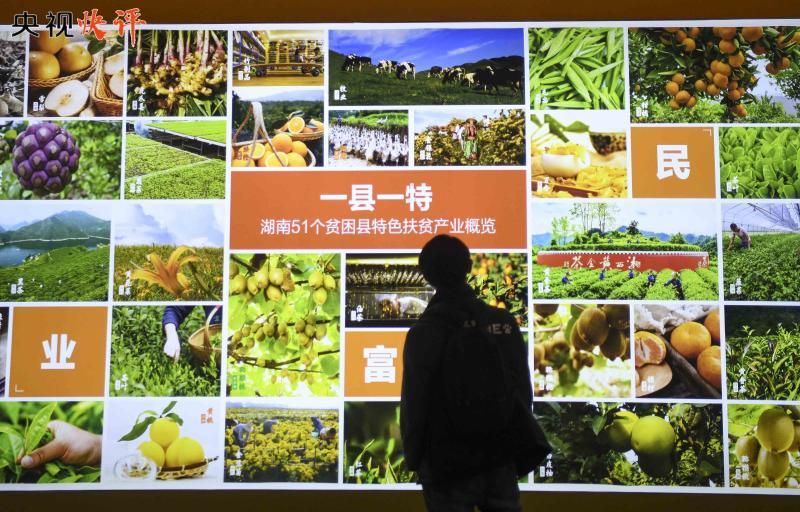Ten years of transformation and prosperity - the thousand-year-old canal writes a new chapter in the era of Beijing-Hangzhou Grand Canal | Grand Canal | Transformation and Reshaping
"Do a good job in the construction of the Grand Canal." In September 2023, General Secretary Xi Jinping's earnest advice during his inspection in Zhejiang was far-reaching.
Starting from Zhejiang in the south and ending in Beijing in the north, the Grand Canal flows through eight provinces and is the earliest, largest and longest artificial river in the world. On June 22, 2014, the Grand Canal of China was approved to be included in the World Heritage List.
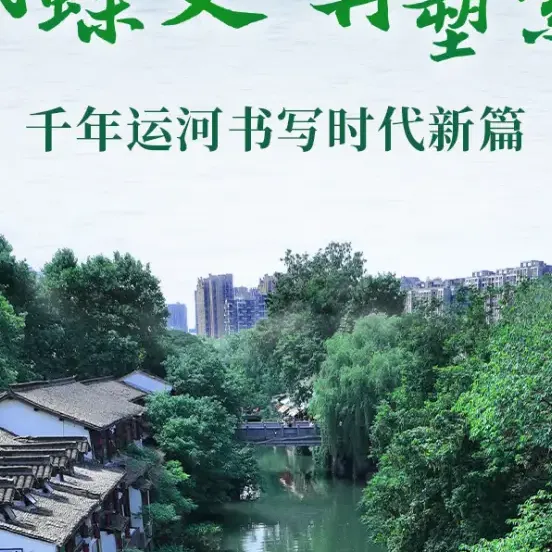
In the ten years since the successful application for World Heritage status, various areas along the canal have adhered to the principles of protection, inheritance and development, creating a vibrant landscape river, ecological river and cultural river, making the ancient Grand Canal truly a "people's canal."
In midsummer, the waves are rippling, willows are swaying on the bank, and the Hangzhou Qiaoxi Historical and Cultural District, located on the banks of the Beijing-Hangzhou Grand Canal, is crowded with tourists.

Tourists visit a stone arch bridge in the Xiaohezhi Street Historical and Cultural District in Hangzhou, Zhejiang Province, on June 12, 2024. Photo by reporter Weng Xinyang
Along the Grand Canal, sewage was once discharged in an disorderly manner, and river sections were seriously polluted. Affected by geographical and climatic factors, some river sections dried up several times.
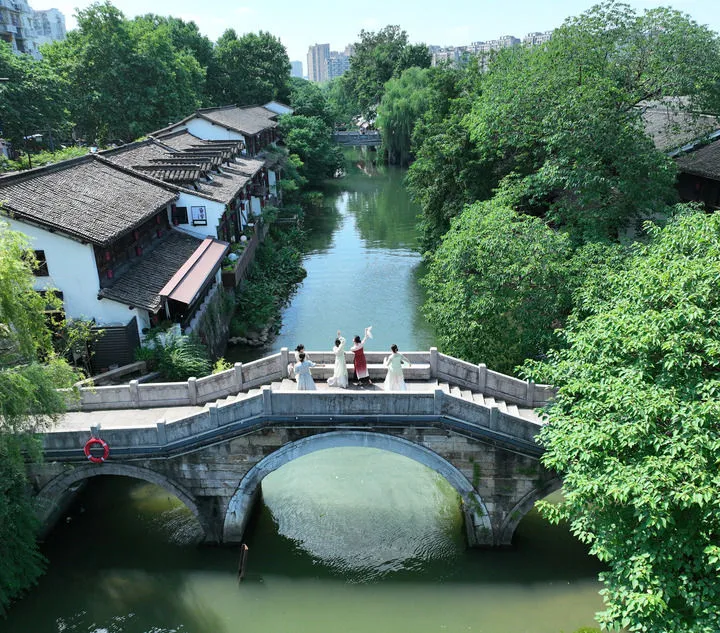
"When I was a child, every household drank clear canal water. Thirty or forty years ago, factory wastewater and domestic sewage were directly discharged into the canal, making the river water black and smelly." Chai Xuanfa, an old resident who has lived in Qiaoxi for more than 70 years, often feels heartbroken when he recalls the situation at that time.
Over the years, as relevant national departments and provinces and cities along the canal have continued to increase their efforts in ecological protection, the dry river sections have been refilled with water, and the black and smelly river water has gradually become clear. Now, you can see the canal scenery at your doorstep every day. Lao Chai said: "The canal is getting more and more beautiful now!"
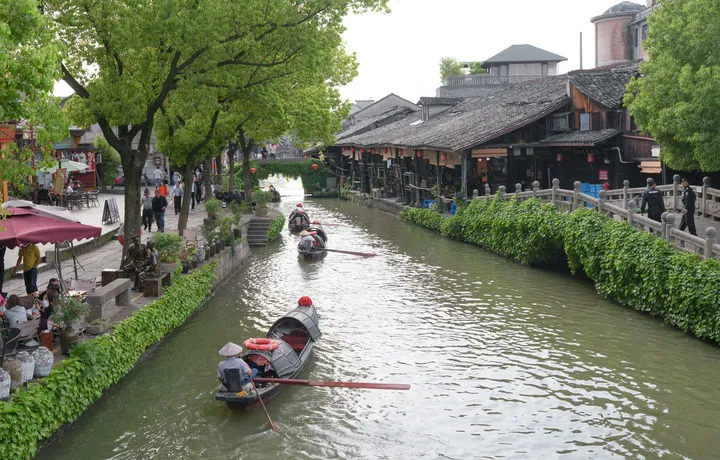
In Hangzhou Gongshu District, a series of projects such as sewage interception, silt removal, and rainwater-sewage separation have been carried out over the years, greatly reducing the pollution sources of the canal. Fan Neng, deputy director of the River Protection and Management Center of the District Urban Management Bureau, said that the district has implemented rainwater-sewage separation in old buildings, and the center has also carried out biological water treatment experiments, using river clams to absorb excess organic matter in the water. "Water treatment has really taken 'embroidery efforts'."
After years of comprehensive renovation and protection and development, many cities along the canal have restored the canal ecology with green banks, beautiful waters, harmonious people and prosperous businesses. In April 2022, under the joint coordination of the Ministry of Water Resources and the four provinces and cities of Beijing, Tianjin, Hebei and Shandong, the Beijing-Hangzhou Grand Canal achieved full water flow for the first time in a century.

Tourists visit Anchang Ancient Town in Shaoxing City, Zhejiang Province on April 24, 2024. Photo by reporter Weng Xinyang
In recent years, Hangzhou folk painter Wu Liren, who is over 60 years old, has traveled all along the canal. His folk paintings reflect both his memories of the canal in the past and the new look of the canal today. "I have painted Tongzhou in Beijing, Yangliuqing in Tianjin, Weishan Lake in Shandong, Shaobo Ancient Town in Yangzhou, Jiangsu, and Anchang Ancient Town in Shaoxing, Zhejiang... From north to south, the canal is now clearer, the banks are greener, and it is becoming more and more beautiful. I can't stop painting," said Wu Liren.

With a history of more than 2,500 years and a winding length of nearly 3,200 kilometers, the Grand Canal carries a profound cultural heritage. General Secretary Xi Jinping pointed out that we should make use of the past to serve the present and deeply tap into the historical and cultural resources with the Grand Canal as the core.
The China Grand Canal Museum in Yangzhou, Jiangsu Province and the ancient canal complement each other. Photo by reporter Ji Chunpeng

At the China Grand Canal Museum in Yangzhou, the "Carrying the Canal for Thousands of Years - Important Archaeological Achievements of the Grand Canal in the New Era" exhibition is exhibiting more than 240 cultural relics from eight provinces along the Grand Canal, most of which are exhibited for the first time. According to incomplete statistics, since 2012, the eight provinces along the Grand Canal have carried out more than 200 canal archaeological projects, and more than 60 archaeological projects have achieved important results, of which seven have been selected as the top ten archaeological discoveries in the country.
Lin Liugen, chairman of the Grand Canal Archaeology and Protection Professional Committee of the Chinese Archaeological Society, said that after the successful application for World Heritage status, archaeological work on the canal has continued to advance, constantly providing evidence for the outstanding characteristics of Chinese civilization.

On April 23, 2024, tourists visited the China Grand Canal Museum in Yangzhou, Jiangsu. Photo by reporter Xu Jiayi
In recent years, Beijing has continued to strengthen the protection of the cultural heritage of the Beijing section of the Grand Canal and implemented more than 220 cultural relics protection projects. Canal sites have been protected and displayed, making the ancient canal more charming.

Yongtong Bridge on the Tonghui River in Beijing has a history of nearly 600 years. Since 2021, Chaoyang District of Beijing has started the renovation project of Yongtong Bridge, removing the asphalt on the bridge deck and renovating the stone bridge. Before the Dragon Boat Festival this year, the overall renovated Yongtong Bridge was officially opened to the public, and its historical features have been restored, giving it a new vitality of the times.
Heritage protection measures are constantly being refined, and the “hundreds of craftsmen” have successors to their legacy.
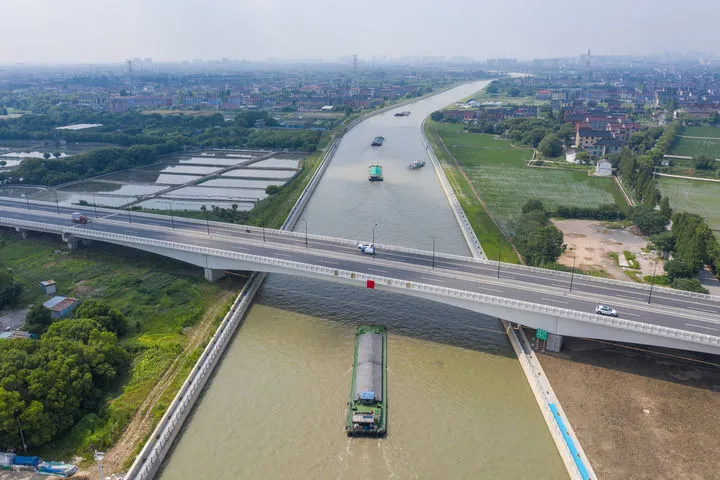
A cruise ship sails on the Beijing-Hangzhou Grand Canal in Cangzhou. Photo by reporter Mou Yu
In Cangzhou, Hebei, Wuqiao Acrobatics World, Dongguang Iron Buddha Temple and other scenic spots have set up special areas for intangible cultural heritage, carried out inheritance evaluation of national intangible cultural heritage representatives, and built intangible cultural heritage cultivation bases such as Wuqiao Acrobatics School. At the Hangzhou Arts and Crafts Museum on the banks of the Beijing-Hangzhou Grand Canal, Hangzhou's "Arts and Crafts Masters Apprenticeship Program" has been carried out for 12 years, successfully training 3 Zhejiang Province Arts and Crafts Masters, 14 Hangzhou Arts and Crafts Masters and a large number of middle and senior arts and crafts masters, passing on the torch, and a large number of intangible cultural heritage projects have been inherited and developed.

The Grand Canal is a place where people travel back and forth from all over the country, and countless colorful traditional cultures have taken root and blossomed on both sides of the canal. "The Grand Canal is a flowing river of heritage and culture," said Zhang Shuheng, a member of the expert group for the protection and application of the Grand Canal and a researcher at the Zhejiang Provincial Institute of Cultural Relics and Archaeology. "The protection, care and inheritance of the Grand Canal is the protection and promotion of China's excellent traditional culture."
The canal, which has been flowing for thousands of years, still benefits the people on both sides of the strait.

As a living linear cultural heritage, from ancient water transport to today's cultural and tourism industry belts along the canal, cities along the Grand Canal focus on the "three-in-one integration" of production, life, and ecology, and are achieving a new balance between the protection and utilization of the canal.
In Donghu Village, Linping District, Hangzhou, the "New Grand Canal" and the "Old Grand Canal" meet here, and cargo ships are turning into the "New Grand Canal" - this is the second channel of the Beijing-Hangzhou Grand Canal Hangzhou section opened in July last year. According to statistics from the Hangzhou Municipal Transportation Bureau, more than 26,000 ships have passed through the second channel of the Grand Canal in the past year, of which the cargo volume of heavy-loaded ships has reached 17 million tons, which has not only eased the traffic pressure on the Hangzhou section of the Grand Canal, but also helped to protect many heritage sites in the Hangzhou section of the Grand Canal.

Water transport is the basic function of the Grand Canal. The annual cargo volume of the Jiangsu section of the Grand Canal alone exceeds 500 million tons, equivalent to the annual cargo volume of eight Beijing-Shanghai expressways. The characteristics of water transport, such as large capacity, small land occupation, low energy consumption and light pollution, are more prominent on the canal. Reporters saw along the canal that many ports have added power supply facilities for moored cargo ships, and many cargo ships have installed photovoltaic panels on the top of the cockpit. The boatmen's daily electricity is no longer dependent on the diesel engines on board, reducing fuel consumption and pollution emissions.
On July 18, 2023, the first batch of navigable cargo ships entered the second channel of the Beijing-Hangzhou Grand Canal in Hangzhou and headed for the Qiantang River. Photo by reporter Xu Yu
Technology empowerment has brought new vitality to canal shipping. On both sides of the Grand Canal in northern Jiangsu, there is a "white pole" equipped with multiple sets of sensor equipment every 2 to 3 kilometers. Using smart monitoring systems and intelligent dispatching systems, the average utilization rate of ship locks in various parts of the Northern Jiangsu Canal has increased from 70% to more than 80%.
Born because of the river, and prospering because of the river. The beautiful ecology has brought about the upgrading and optimization of the industrial structure, and ecological landscape belts and cultural and tourism resource belts have been continuously gathered along the canal.
In February this year, the Beijing Grand Canal Cultural Tourism Scenic Area passed the 5A-level scenic area acceptance. It connects multiple scenic spots with the canal as the axis, and its area is more than twice that of the Summer Palace. In the adjacent canal business district, about 23,000 companies have registered and settled in, initially forming a modern financial service industry chain and headquarters economy development trend.
On June 10, 2024, citizens watched the dragon boat race on the bank of the Beijing-Hangzhou Grand Canal in Beijing's sub-city center. Photo by reporter Ju Huanzong
The East Zhejiang Canal runs eastward to Ningbo and flows into the East China Sea. Ningbo, as an important hub for opening up to the outside world, is an important window for cultural exchanges between China and foreign countries.
In Hangzhou Canal Square, there are ten characters engraved: "The People's Canal, the Tourists' Canal". Hua Fang, deputy chief planner of Hangzhou Urban Planning and Design Institute, said that as a living cultural heritage, the canal has always benefited the people on both sides of the strait and deserves to be guarded and protected by generations.


